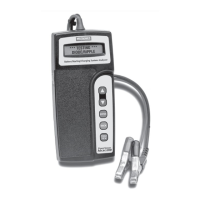• 9 •
NO CHARGING VOLTAGE
The alternator is not providing charging current to the battery. Check the
belts to ensure the alternator is rotating with the engine running. If the
belts are slipping or broken, replace the belts and retest. Check all
connections to and from the alternator especially the connection to the
battery. If the connection is loose or heavily corroded, clean or replace
the cable and retest. If the belts and connections are in good working
condition, replace the alternator. (In older vehicles, external voltage
regulators were utilized. In these instances, only replacement of the
voltage regulator may be required.)
LOW CHARGING VOLTAGE
The alternator is not providing sufficient current for the system’s electri-
cal loads and the charging current for the battery. Check the belts to ensure
the alternator is rotating with the engine running.
If the belts are slipping or
broken, replace the belts and retest. Check the connections from the
alternator to the battery. If the connection is loose or heavily corroded,
clean or replace the cable and retest. If the belts and connections are in
good working condition, replace the alternator. (In older vehicles, exter-
nal voltage regulators were utilized. In these instances, only replacement
of the voltage regulator may be required.)
HIGH CHARGING VOLTAGE
This means the voltage output from the alternator to the battery exceeds
the normal limits of a functioning regulator. Check to ensure there are no
loose connections and that the ground connection is normal. If there are
no connection issues, replace the regulator. Since most alternators have
the regulator built-in, this will require you to replace the alternator. (In
older vehicles, external voltage regulators were utilized. In these
instances, only replacement of the voltage regulator may be required.)
The regulator is designed to control voltage output based on the battery
voltage, underhood temperature, and vehicle loads being used. In other
words, it controls the maximum voltage the system can produce based
upon the current needs and amount of current that can be produced by
the spinning of the rotor in the alternator. The normal high limit of a
typical automotive regulator is 14.7 volts +/– 0.5. Check manufacturer
specifications for the correct limit, as it will vary by vehicle type and
manufacturer.
A high charging rate will overcharge the battery which may decrease its
life and cause it to fail. If the battery test decision is REPLACE and the
charging system test shows a HIGH CHARGING VOLTAGE, check the
levels of the electrolyte in the battery. A battery condition symptom of
overcharging is fluid spewing through the vent caps which causes low
electrolyte levels and will harm the battery.

